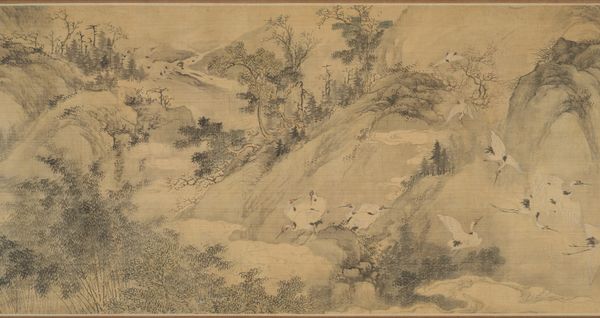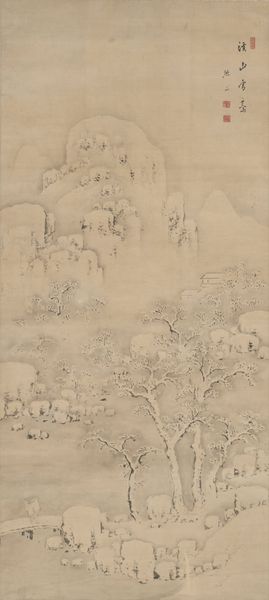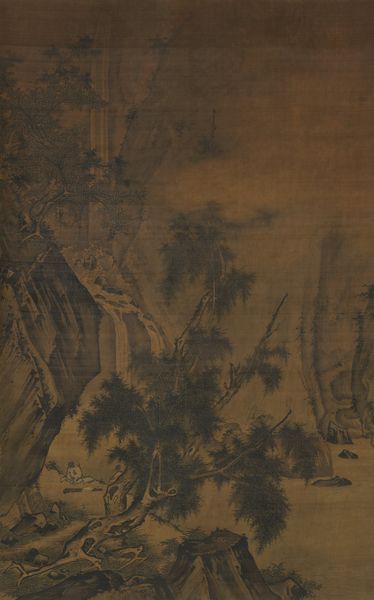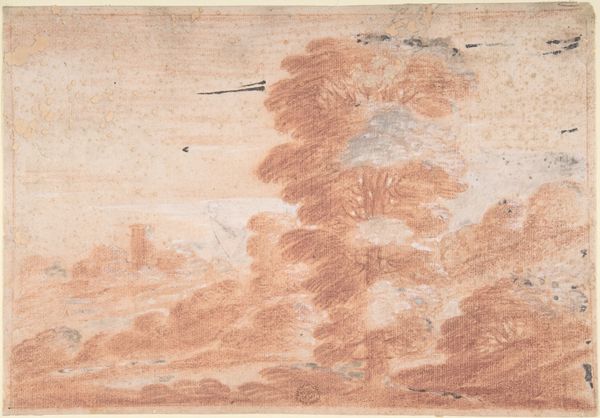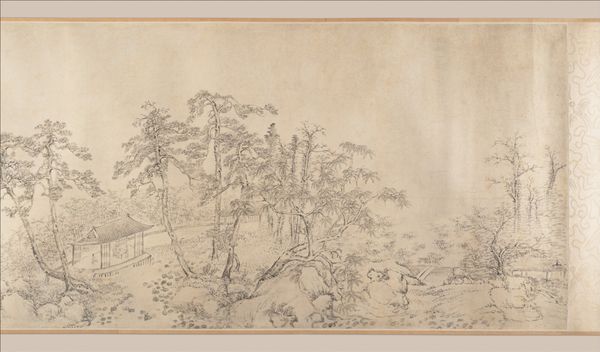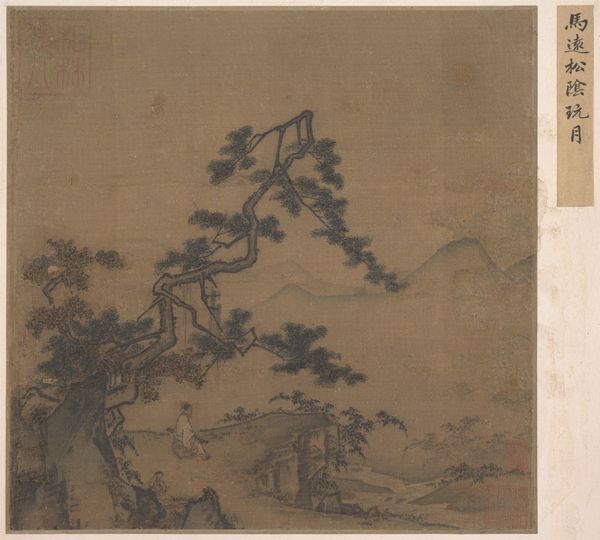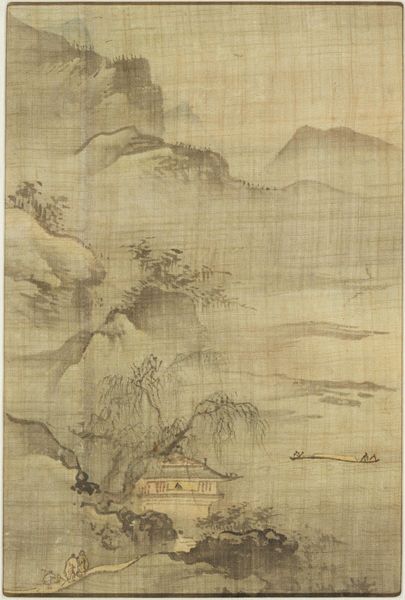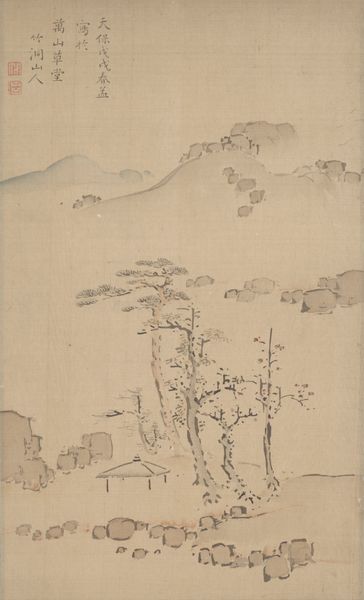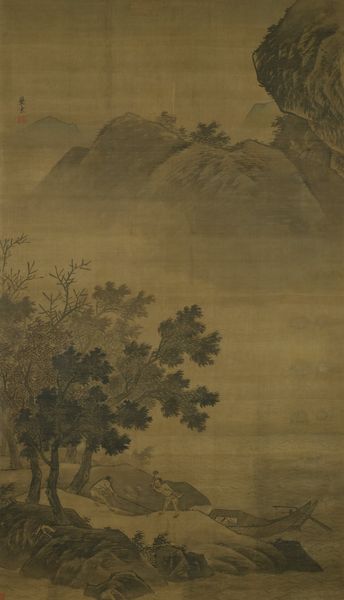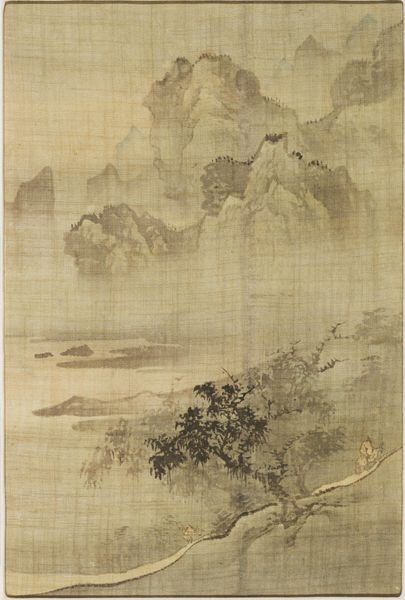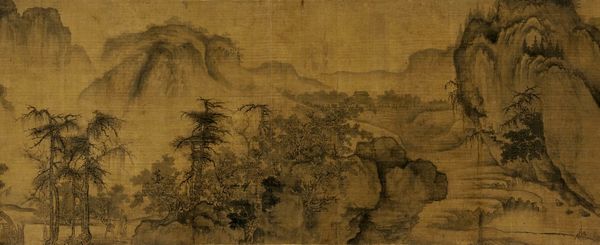
tempera, painting, ink
#
medieval
#
tempera
#
painting
#
asian-art
#
landscape
#
figuration
#
ink
#
20_southern-song-dynasty-1127-1279
#
men
#
china
#
calligraphy
Dimensions: Image: 10 15/16 in. × 21 ft. 9 1/4 in. (27.8 × 663.6 cm) Overall with mounting: 13 13/16 in. × 45 ft. 10 1/2 in. (35.1 × 1398.3 cm)
Copyright: Public Domain
Editor: This is *Odes of the State of Bin*, created sometime between 1134 and 1166 by Ma Hezhi. It’s ink and tempera on silk, and it’s currently at the Metropolitan Museum of Art. The scene feels…serene, but also a bit detached. How do you interpret this work? Curator: I see a complex interplay between landscape and societal critique. Ma Hezhi, working in the Southern Song Dynasty, was illustrating poems rich with social commentary. Note how the figures seem integrated into, yet somewhat overwhelmed by, the landscape. Doesn't that integration highlight the relationship between the ruling class and the common people in the poem, perhaps hinting at their disconnect? What feelings are evoked when we consider class interplay represented as landscape? Editor: That's interesting. I was focused on the aesthetic beauty, but I hadn't considered the socio-political implications so deeply. Is it unusual for paintings from this period to have such commentary? Curator: Not at all. Many court artists subtly, or not so subtly, embedded social critiques within their work, and you see it encoded here with landscape and figuration working in conversation. Art served as a vehicle for expressing nuanced perspectives on governance and the human condition, reflecting a broader intellectual climate shaped by Confucian ideals. What does the use of calligraphy and placement, for example, seem to be highlighting? Editor: The calligraphy really adds another layer; the textual adds historical grounding for its reading, and reminds me about art’s grounding in historical record. Curator: Exactly. The connection to that record, whether historical or biographical, becomes a part of the experience and reading. It provides valuable context, enriching our appreciation and revealing its contemporary relevance. Editor: This has given me a whole new perspective. I'll definitely look at art from this period with a more critical eye now! Curator: And hopefully also with a stronger ear towards the cultural context from which these works arose.
Comments
No comments
Be the first to comment and join the conversation on the ultimate creative platform.
